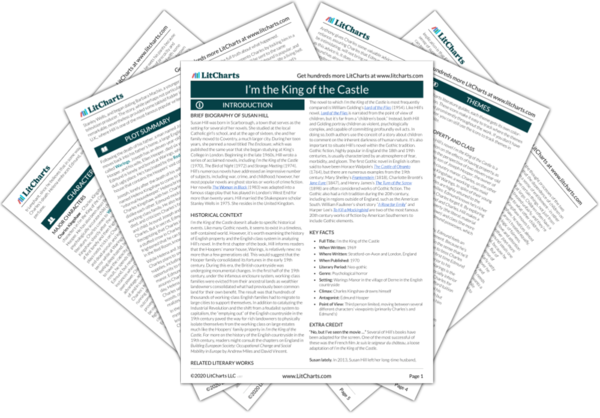In many English books about big country houses, the main character doesn’t find a way of sneaking into the “secret room” until the end of the book (for example,
Jane Eyre doesn’t learn what’s in the attic until her story is almost done). The fact that Edmund learns what’s in the Red Room before the end of the first chapter suggests that this book is different from its Gothic predecessors. That is, the Red Room is not the story’s central mystery. Rather, in many ways Edmund himself will emerge as the book’s great mystery.
